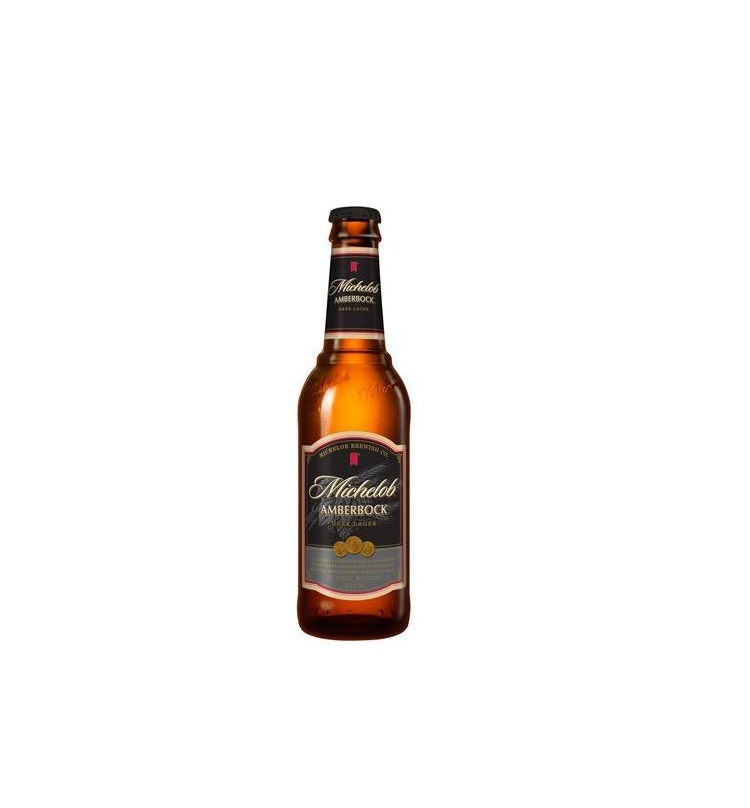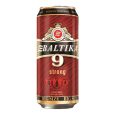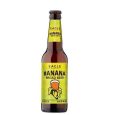Amber Bock beer is a fascinating variety within the broad and diverse world of beers, offering a unique blend of flavor and tradition. This particular type of beer is a darker lager that combines the smoothness of a traditional bock with subtle hints of caramel and a mild hoppy bitterness, distinguishing it from other darker beers like stouts or porters. Typically brewed with a combination of roasted malts, Amber Bock presents a rich amber color that is both inviting and indicative of its deeper flavor profile.
The term “bock” traditionally refers to a strong German lager, and while Amber Bock maintains some of these characteristics, it is generally more accessible with a milder flavor and lower alcohol content, making it a popular choice among a wide range of beer enthusiasts. Its balanced maltiness and slight sweetness are typically paired with a relatively low bitterness, which allows the toasted malt flavors to shine through, creating a harmonious and enjoyable drinking experience.
Amber Bock beers are particularly noted for their versatility. They can be enjoyed on their own, providing a satisfying richness that is not overly heavy, making them perfect for both cooler and warmer months. Additionally, their robust character makes them excellent companions for a variety of foods, from hearty meats to spicy dishes and rich desserts. This adaptability has helped Amber Bock beer carve out a niche for itself in the increasingly competitive beer market, appealing to those who appreciate a beer that offers both tradition and a touch of uniqueness.
| Feature | Description |
|---|---|
| Type | Amber Bock is a darker lager that blends the smoothness of traditional bock beer with the distinctive flavors of caramel and a mild hoppy bitterness. |
| Flavor Profile | Characterized by a rich amber color, balanced maltiness, and slight sweetness with low bitterness, allowing toasted malt flavors to dominate. |
| Traditional Roots | While the term “bock” suggests a strong German lager, Amber Bock is milder, making it more accessible with a lower alcohol content than traditional bocks. |
| Versatility | Can be enjoyed on its own or paired with a variety of foods, making it suitable for both cooler and warmer months. Its robust character complements hearty meats, spicy dishes, and rich desserts. |
| Market Niche | Its unique combination of traditional brewing techniques and distinctive flavors allows Amber Bock to stand out in the competitive beer market. |
Contents
Origin and History
Amber Bock beer, with its rich, malt-forward profile, has a storied history that reflects the brewing traditions of Germany, where the bock style originally emerged. The term “bock” is derived from the German town of Einbeck, known in the Middle Ages for its strong, dark ales. By the 17th century, this beer style had been adopted and refined by brewers in Munich, who adjusted the original recipes to the lagering techniques prevalent in Bavaria. This adaptation led to what we now recognize as traditional bock beer, a darker, stronger lager compared to the lighter lagers of the time.

Over the years, as bock beers spread across Europe and America, variations began to emerge. One such variation is the Amber Bock, a more modern interpretation that combines the traditional bock’s strength and maltiness with a lighter color and body, making it more approachable and versatile. The development of Amber Bock beer can be seen as a response to consumer preferences shifting towards more diverse and sessionable beer options, without straying too far from historical brewing traditions.
The cultural roots of Amber Bock beer lie in the celebration of the end of winter and the onset of spring. Originally, bock beers were brewed by German monks during the Lenten season as a source of nutrition during fasts. This strong, rich beer provided sustenance and comfort during the colder months. Today, while not bound by these religious practices, Amber Bock still carries the legacy of a celebratory beer, marking seasonal transitions and enjoyed at festivals and gatherings.
| Aspect | Details |
|---|---|
| Origins | Originates from the German town of Einbeck, known for its strong, dark ales. Evolved into the bock style in Munich in the 17th century, adapting to Bavarian lagering techniques. |
| Evolution | Traditional bock evolved into various subtypes, including Amber Bock, which offers a lighter color and body while maintaining the strength and maltiness of the original. |
| Consumer Appeal | Amber Bock is a modern variation that responds to consumer preferences for more diverse and sessionable options, maintaining traditional flavors in a more accessible form. |
| Cultural Significance | Historically brewed by German monks during Lent as a nutritious supplement, it symbolizes the end of winter and celebration of spring. Today, it remains a celebratory beer for seasonal transitions and festivals. |
Brewing Process
The brewing process for Amber Bock beer follows the traditional methods of lager brewing but introduces unique elements that define its specific style. The process begins with the selection of the malt, which is crucial in achieving the desired amber color and caramel flavor profile. Brewers typically use a mix of pale and caramel malts. Pale malt provides the necessary fermentable sugars, while caramel malt adds color and a sweet, toasty flavor that is signature to Amber Bock.
Mashing is the next step, where the malts are mixed with hot water to create a mash. This process activates enzymes in the malt that convert starches into sugars, which are essential for fermentation. The temperature and duration of the mash are carefully controlled to favor the development of specific flavors and to ensure the right balance between sweetness and body.
After mashing, the wort is separated from the grain in a process called lautering. The clear wort is then boiled, during which hops are added. In the case of Amber Bock, the hop addition is typically moderate. This is not a hop-forward beer; the hops are there to provide balance to the malt with a subtle bitterness and to act as a preservative without overpowering the malt flavors.

Following the boil, the wort is cooled and transferred to fermentation tanks where yeast is added. Amber Bock is fermented at cooler temperatures typical of lagers, usually around 48 to 55 degrees Fahrenheit. This cooler fermentation process is slower than ale fermentation and contributes to the crisp, clean finish characteristic of lagers. It also allows the subtle flavors from the malts to stand out without being overshadowed by yeast-derived flavors.
The final and critical step in brewing Amber Bock is lagering. During this phase, the beer is stored at near-freezing temperatures for several weeks or even months. This prolonged storage helps to clear the beer, mellow any harsh flavors, and achieve the smoothness that Amber Bocks are known for. This step underscores the patience required in lager brewing, which in turn rewards both the brewer and the drinker with a beer that is balanced, refreshing, and richly flavored.
| Step | Process | Impact on Beer |
|---|---|---|
| Malt Selection | Use of pale and caramel malts to achieve the desired amber color and caramel flavor profile. | Provides fermentable sugars and adds color, sweetness, and toasty flavors to the beer. |
| Mashing | Malts are mixed with hot water to convert starches into sugars. | Enables the development of specific flavors and ensures the right balance between sweetness and body. |
| Lautering | Separation of the wort from the grain after mashing. | Produces a clear wort ready for boiling and hop addition. |
| Boiling | Wort is boiled and hops are added, usually in moderate amounts. | Provides balance with subtle bitterness and acts as a preservative without overwhelming the malt flavors. |
| Fermentation | Fermented at cooler lager temperatures using yeast. | Contributes to a crisp, clean finish and allows malt flavors to shine, characteristic of lagers. |
| Lagering | Stored at near-freezing temperatures for several weeks or months. | Helps to clear the beer, mellow flavors, and achieve the smoothness that defines Amber Bock. |
Flavor Profile
Amber Bock beer offers a delightful interplay of flavors that make it both distinctive and approachable for a broad range of beer enthusiasts. The aroma typically features a blend of rich malty sweetness accented by subtle hints of caramel and toffee. Depending on the specific brew, there might also be a light touch of floral or herbal notes from the hops, although these are generally understated.
In terms of taste, Amber Bock is predominantly malty, with a pleasant sweetness that recalls caramel and toasted bread. This sweetness is beautifully balanced by a mild bitterness, ensuring that the beer remains refreshing and not cloyingly sweet. The finish is usually clean and somewhat dry, encouraging another sip. The mouthfeel of Amber Bock is smooth and moderately carbonated, with a body that can be described as medium-light to medium. This makes Amber Bock beers particularly drinkable — a versatile choice for many occasions and seasons.
Comparing Amber Bock to other beer types, such as traditional Bocks or even darker lagers like Dunkels, reveals its unique position. Traditional Bocks are typically stronger and have a more pronounced malt character with higher alcohol content, which makes them less sessionable than Amber Bock. Dunkel lagers, on the other hand, share the malt-forward profile but often exhibit a deeper, almost chocolaty and roasted flavor, which is less pronounced in Amber Bock beers. This positions Amber Bock as a middle ground, offering enough malt complexity to satisfy those who enjoy darker beers, yet retaining the lightness and drinkability of paler lagers.
| Characteristic | Amber Bock Beer | Comparison to Other Beers |
|---|---|---|
| Aroma | Rich malty sweetness with hints of caramel and toffee, possibly light floral or herbal notes from hops. | Less hop-forward than many pale lagers or IPAs, focusing more on malt aromatics. |
| Taste | Predominantly malty with caramel sweetness balanced by mild bitterness; clean and somewhat dry finish. | Less intense and alcoholic compared to traditional Bocks, more malt complexity than lighter lagers. |
| Mouthfeel | Smooth and moderately carbonated, medium-light to medium body. | Lighter and more drinkable than many darker lagers like Dunkels, which often have a heavier and richer body. |
| Drinkability and Versatility | Highly drinkable and versatile for many occasions and seasons. | Offers a balance between the lighter drinkability of pale lagers and the rich flavors of traditional Bocks and Dunkels. |
Varieties and Brands
Amber Bock beers come in a variety of styles, each adding a unique twist to the classic profile. Some breweries might introduce additional flavoring elements like honey or spices to enhance the beer’s complexity. Seasonal variations might include autumn-inspired versions with added pumpkin and spice, or spring releases that feature brighter, floral hop characters. This versatility allows breweries to tailor their Amber Bock offerings according to regional preferences and seasonal availability.
Several notable brands have made a name for themselves by producing exceptional Amber Bock beers. One of the most recognized is Michelob, which offers a widely distributed Amber Bock that is often credited with popularizing this style among American beer drinkers. Michelob’s Amber Bock is known for its smooth, rich flavor and excellent balance, making it a staple in many bars and homes.
Another notable producer is Shiner, with its Shiner Bock, which, while technically a traditional Bock, shares many characteristics with Amber Bock beers in terms of approachability and flavor profile. Shiner Bock is a bit stronger and maltier but maintains a balance that echoes the Amber Bock style’s drinkability.
In the craft beer scene, smaller breweries like Bell’s Brewery have experimented with the style, producing limited runs of Amber Bock beers that explore the boundaries of the style with unique malts and hops, offering beer aficionados new and exciting variations to try.

The market presence of these beers varies widely, with some brands achieving widespread distribution and others remaining regional favorites. Michelob’s version is perhaps the most accessible, found across the United States and beyond, making it a global ambassador for the style. Craft versions, however, often enjoy a strong local following and are frequently sought out by those looking to support smaller, independent breweries.
In summary, Amber Bock beer holds a cherished place in the beer world, bridging the gap between heavier bocks and lighter lagers with its delightful flavor and broad appeal. Whether from a large, well-known brewery or a small local craft producer, Amber Bock beers offer a rich tapestry of flavors that celebrate the art of brewing.
| Variation | Details | Notable Producers | Market Presence |
|---|---|---|---|
| Classic Amber Bock | Traditional profile with a balance of malt sweetness and mild hop bitterness. | Michelob (widely known for popularizing the style in the U.S.) | Widely distributed, available nationally and internationally. |
| Seasonal Variations | Includes flavors like honey, spices, or pumpkin for autumn; lighter, floral notes for spring. | Various craft breweries | Regional availability, often limited releases. |
| Traditional Bock Comparisons | Stronger and maltier but maintains balance similar to Amber Bocks. | Shiner (Shiner Bock) | Strong regional following, with broader distribution in the U.S. |
| Craft Variations | Experimental versions using unique malts and hops to expand the style’s boundaries. | Bell’s Brewery (limited runs) | Limited distribution, popular among craft beer aficionados. |
Food Pairings
Amber Bock beer, with its rich malt flavors and subtle sweetness, pairs wonderfully with a variety of foods, enhancing both traditional and contemporary dishes. The beer’s caramel and toasted notes make it an excellent companion for grilled meats. The char on a grilled steak or barbecue ribs complements the malt sweetness of Amber Bock, while the beer’s crisp finish cuts through the fattiness of the meat, balancing each bite. Similarly, roasted pork or smoked sausages are uplifted by Amber Bock’s smooth and slightly sweet profile, making each sip a refreshing contrast to the smoky flavors of the food.
For vegetarian options, Amber Bock pairs well with grilled vegetables, especially those with a natural sweetness such as bell peppers and onions. The caramelization on the vegetables echoes the beer’s malty undertones, creating a harmonious flavor profile. Moreover, dishes that incorporate caramelized onions, like French onion soup or a gourmet burger topped with them, are particularly delightful with Amber Bock, as the caramel notes in both the beer and the food enhance each other beautifully.
In terms of cheese pairings, Amber Bock goes well with aged cheeses such as Gouda or cheddar. The nuttiness of the cheese complements the beer’s toasted malt flavors, while the beer’s carbonation and crisp finish provide a palate-cleansing effect between bites. For dessert, try pairing Amber Bock with caramel desserts or apple pie. The beer’s sweetness aligns with the dessert, while its crisp finish keeps the pairing from becoming too heavy.
Contemporary food pairings might include international dishes like Indian or Thai curries. The spices in these dishes are balanced by Amber Bock’s smooth, malt-forward taste, which can cool the palate when eating moderately spicy foods. Similarly, the fusion of traditional Mexican tacos with a variety of fillings—from fish to carnitas—works well with Amber Bock, as its refreshing quality can complement the richness and spices of Mexican cuisine.
| Food Type | Recommended Pairings | Flavor Interaction |
|---|---|---|
| Meats | Grilled steak, barbecue ribs, roasted pork, smoked sausages. | Beer’s malt sweetness complements the char and smokiness; crisp finish cuts through fattiness. |
| Vegetarian Options | Grilled vegetables, dishes with caramelized onions like French onion soup or gourmet burgers. | Caramelization in vegetables and dishes echoes the beer’s malty undertones, enhancing mutual flavors. |
| Cheeses | Aged Gouda, cheddar. | Nuttiness of the cheese complements the toasted malt flavors; carbonation and crisp finish cleanse the palate. |
| Desserts | Caramel desserts, apple pie. | Sweetness of the beer aligns with desserts; crisp finish prevents the pairing from being overly heavy. |
| International Cuisine | Indian and Thai curries, Mexican tacos. | Beer’s smooth, malt-forward taste balances spices and complements the richness of diverse cuisines. |
Cultural Significance
Amber Bock beer holds a special place in the beer culture, representing a blend of tradition and modern brewing techniques. While the roots of Bock beer are deeply embedded in German brewing history, Amber Bock as a variation speaks to a broader, more universal appeal. It embodies the innovation within the craft brewing scene, taking a traditional style and adapting it to suit contemporary tastes and preferences. This adaptation has allowed Amber Bock to transcend its origins and become a favorite among a diverse audience.
In Germany, Bock beers are traditionally consumed during specific times of the year, such as winter and early spring, coinciding with various festivals and public celebrations like Oktoberfest and the Starkbierzeit, or “strong beer season.” Though Amber Bock does not necessarily adhere to these seasonal constraints, it still plays a role in communal gatherings and festivities, often served as a bridge between lighter beers and the heavier traditional bocks.
Moreover, Amber Bock’s adaptability has made it a symbol of how beer can connect with local traditions while evolving to meet global tastes. In the United States, for example, Amber Bock has been embraced within the craft beer movement as a sessionable option that pairs well with American cuisine and lifestyle, from barbecue cookouts to sports events. Its presence in diverse settings—from upscale dining to casual pubs—highlights its role in contemporary beer culture, making it a staple at gatherings and a go-to choice for casual drinkers and beer aficionados alike.
The cultural rituals and celebrations associated with Amber Bock may not be as defined as those with its stronger bock counterparts, but it nonetheless marks its presence in the modern beer scene as a celebratory drink, often chosen for its ability to complement a wide range of foods and its appeal across a spectrum of beer drinkers. Whether at a backyard barbecue or a fine dining event, Amber Bock represents a modern tradition in brewing, celebrating the heritage of bock beers while adapting to the tastes of today’s global beer community.
| Cultural Aspect | Details |
|---|---|
| Roots and Evolution | While traditional Bock beers are part of German brewing heritage, Amber Bock has adapted this tradition for a broader appeal, incorporating modern brewing techniques and tastes. |
| Seasonal Traditions | In Germany, Bock beers are typically enjoyed during specific seasons and festivals. Amber Bock, however, is versatile and not bound by these traditions, making it suitable for year-round enjoyment. |
| Global and Local Appeal | Embraced in the U.S. within the craft beer movement as a sessionable beer that complements American cuisine and lifestyle. It has a wide appeal, fitting into diverse social settings from casual to upscale. |
| Celebratory Role | Although not tied to specific cultural rituals, Amber Bock is often selected for its celebratory quality in gatherings and events, bridging traditional beer styles with modern preferences. |
Current Trends
Amber Bock beer, a staple in the realm of craft and mainstream brewing, continues to evolve with the dynamic beer industry. The recent trend towards more flavor-forward and diverse beer offerings has influenced Amber Bock producers to experiment with new brewing techniques and ingredient blends. One of the key trends is the incorporation of local and artisanal ingredients, which brewers use to create unique flavor profiles that distinguish their Amber Bock from competitors. For example, some breweries have begun using locally sourced hops or specialty malts, which impart distinct regional characteristics to the beer, appealing to consumers interested in supporting local businesses.

Another significant trend is the experimentation with aging processes. Barrel-aging, once reserved for stouts and strong ales, is now being Explorer by Amber Bock brewers. Aging in bourbon, rum, or even wine barrels can add complex undertones of vanilla, oak, and spirits to the traditional caramel and malty flavors of Amber Bock. This innovation not only enhances the depth of the beer’s flavor but also positions Amber Bock as a premium offering in the market.
Moreover, there is an increasing demand for more sessionable, lower-alcohol versions of traditional beers, including Amber Bock. This shift is driven by consumers who desire the full flavor of a craft beer but with lower alcohol content to suit lifestyle preferences geared towards health and wellness. Brewers are responding by crafting versions of Amber Bock that maintain the rich, malty character at a lower ABV, making it suitable for longer drinking sessions without compromising on taste.
| Trend | Description | Consumer Impact |
|---|---|---|
| Local and Artisanal Ingredients | Brewers are incorporating locally sourced hops and specialty malts, giving Amber Bock a unique regional character. | Attracts consumers interested in supporting local businesses and experiencing regional flavors. |
| Barrel-Aging | Experimentation with aging Amber Bock in bourbon, rum, or wine barrels to introduce flavors like vanilla and oak. | Enhances the depth of flavor, appealing to those seeking premium, complex beers. |
| Sessionable Variants | Creating lower-alcohol versions of Amber Bock to deliver rich, malty flavor in a more drinkable, session-friendly format. | Meets the demand of consumers looking for full-flavored beers with lower alcohol content, suitable for health-conscious lifestyles. |
Consumer Information
For consumers looking to purchase Amber Bock beer, it is widely available in both physical and online stores. It can be found in supermarkets, liquor stores, and specialty beer shops. In the U.S., major retailers such as Total Wine & More, BevMo!, and local craft beer stores often carry a selection of Amber Bock beers from various breweries. Internationally, Amber Bock is accessible in countries with a strong beer culture, such as Germany, Canada, and the UK, where it can be purchased from similar retail outlets.
The average pricing of Amber Bock beer varies depending on the brand and the region. Typically, a six-pack of Amber Bock beer from a well-known brewery can cost between $8 and $15. Artisanal or limited edition versions, especially those that are barrel-aged or made with specialty ingredients, may be priced higher due to the additional production costs and the premium positioning of the product.
When selecting Amber Bock beer, consumers should consider the brewery’s reputation and the specifics of the beer’s style. Reading the label for details about the malt and hop types, as well as the ABV, can provide insights into the flavor profile and strength of the beer. Additionally, checking the bottling or canning date is crucial, as fresher beer will offer a better representation of the intended flavors, especially if the beer uses a significant amount of hops.
Serving Amber Bock beer at the right temperature is also essential for enhancing the drinking experience. It is best served slightly chilled, between 45 to 50 degrees Fahrenheit. This temperature range allows the malt flavors to shine without muting the subtle complexities of the beer. Serving Amber Bock in a tulip glass or a pint glass can also enhance the aromas and flavors, making the drinking experience more enjoyable.
Ultimately, Amber Bock beer remains a popular choice among beer enthusiasts and casual drinkers alike. Its evolving production trends and the breadth of available options make it a versatile and appealing option for a wide range of palates. Whether enjoying a classic version or exploring a new, innovative take, Amber Bock beer offers a rich tapestry of flavors that celebrate the tradition and creativity of the brewing industry.
| Aspect | Details |
|---|---|
| Availability | Widely available in supermarkets, liquor stores, and specialty beer shops in the U.S. and internationally in countries with a strong beer culture like Germany, Canada, and the UK. |
| Pricing | Typical price range for a six-pack is $8 to $15. Artisanal or limited edition versions may cost more. |
| Selection Tips | Consider the brewery’s reputation, read labels for malt and hop types, and check the ABV and packaging date for freshness and flavor insight. |
| Serving Suggestions | Best served slightly chilled, between 45 to 50 degrees Fahrenheit, in a tulip glass or pint glass to enhance aromas and flavors. |
Amber Bock beer, with its rich caramel and malty flavor profile, has established itself as a beloved choice among beer aficionados and casual drinkers alike. Originating from the traditional Bock beers of Germany, Amber Bock has evolved into a distinct category that offers a milder, more approachable version of its stronger ancestors. The beer’s deep amber color and smooth finish make it a popular selection year-round, distinguishing it from both lighter lagers and darker stouts and porters.
Throughout its history, Amber Bock has been emblematic of brewing tradition and innovation. Brewers have continually adapted the production process to incorporate new techniques and ingredients, reflecting broader trends in the craft beer industry. The use of local ingredients and the exploration of barrel aging are just a couple of examples of how Amber Bock remains relevant and exciting in a competitive market. Additionally, the move towards creating lower-alcohol versions of traditional beers speaks to changing consumer preferences towards healthier lifestyle choices without sacrificing flavor.
The flavor profile of Amber Bock is particularly notable for its versatility. It pairs exceptionally well with a wide range of foods, from hearty meats to spicy dishes and rich desserts, making it a staple in dining and social occasions. This versatility extends to its adaptation in various beer markets around the world, where local breweries interpret the traditional Amber Bock style with regional touches.
As for the varieties and brands, Amber Bock is produced by numerous breweries, each adding its unique twist to the traditional formula. From major labels to local craft producers, the availability of different Amber Bock beers encourages consumers to explore and enjoy a spectrum of tastes within the same beer style. This diversity also supports the beer’s cultural significance, as it often plays a role in local traditions and festivities, further embedding itself in the social fabric of its regions.
Looking to the future, Amber Bock beer appears poised for continued success in the global beer market. Its established popularity provides a strong foundation, while the ongoing innovation in brewing techniques and flavor profiles likely will attract new generations of beer drinkers. The trend towards more authentic and locally inspired beverages may see Amber Bock gaining popularity as consumers increasingly seek out beers that offer both tradition and a unique story.
Moreover, the craft beer movement, which shows no signs of slowing down, will likely continue to embrace Amber Bock as a canvas for experimentation and expression. The potential for new variations and limited-edition releases can help maintain consumer interest and keep Amber Bock relevant in an ever-evolving market.
In conclusion, Amber Bock beer combines tradition with adaptability, making it a perennial favorite that resonates with a broad audience. Its ability to balance classic flavors with innovative brewing approaches positions it well within the dynamic landscape of the global beer industry. As tastes and technologies develop, Amber Bock will likely continue to be a significant player, appreciated for both its heritage and its versatility in the new age of beer consumption. Whether served in a cozy pub, at a festive celebration, or alongside a fine meal, Amber Bock remains a testament to the rich and ongoing history of beer making.




